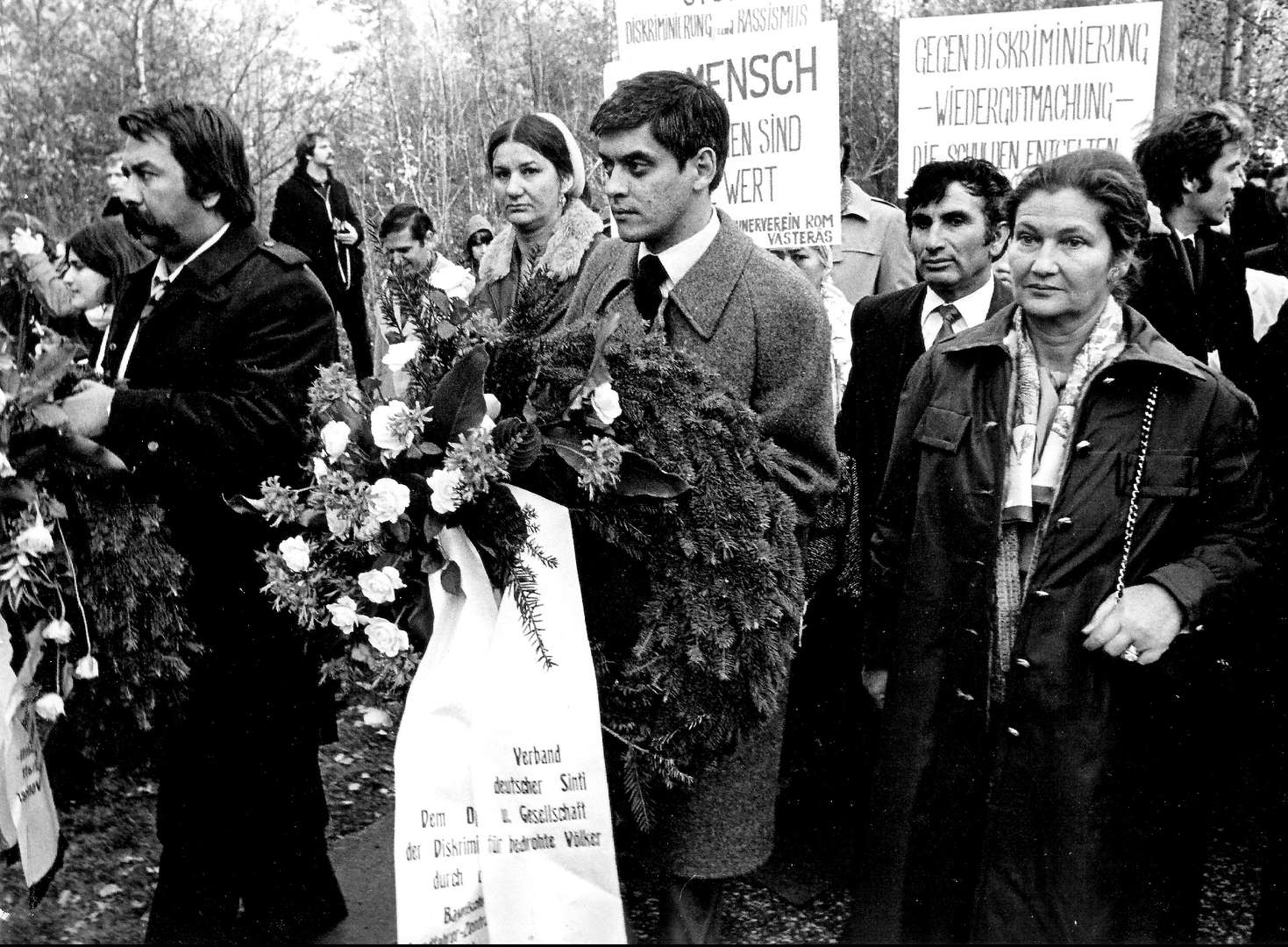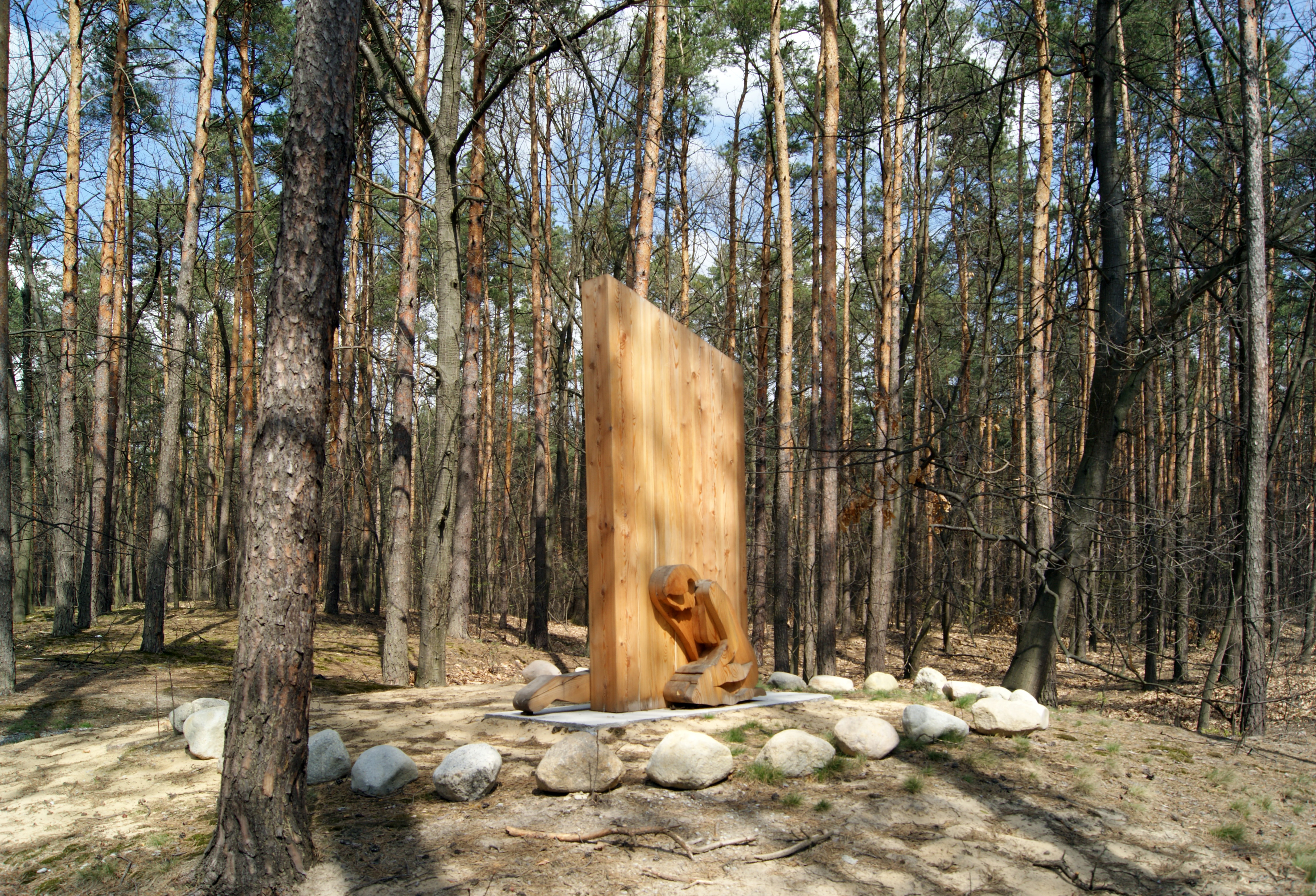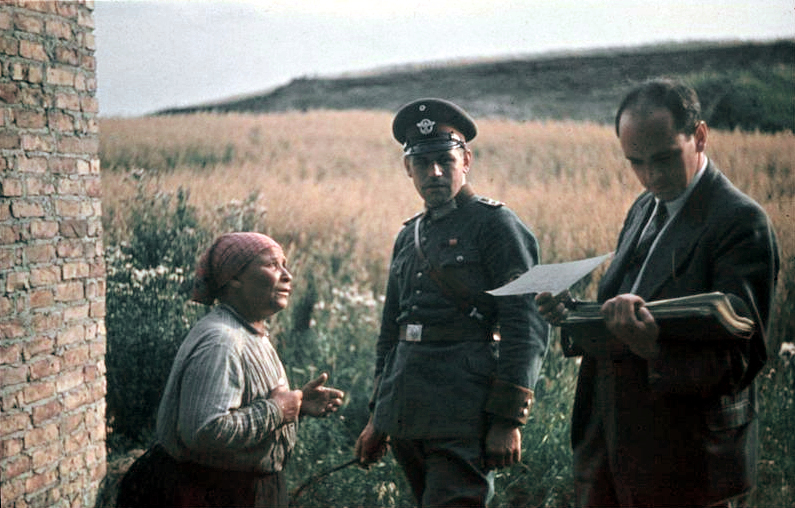Discrimination, classification and eugenics: a road to genocide
The genocide of the Roma and Sinti was one of the darkest chapters of the Second World War. Like the Jews, they were victims of the brutal persecution of the Nazi regime. Imprisoned in concentration camps and ghettos, murdered in gas chambers and subjected to other methods of extermination, they became victims of the German Nazi genocide whose mark is still felt in the Roma community today.
Nazi ideology based on racism and eugenics proclaimed the superiority of the Aryan race over others. Due to their cultural difference, the Roma and Sinti were perceived as an ‘inferior race’, ‘undesirable’ and incompatible with the ideal of German society. Because of their nomadic lifestyle, they were described as ‘antisocial’ and ‘criminal’, inherently inclined to commit crimes. They were considered a threat to the purity of the Aryan race and the social order. Already from the early 1930s, the Roma and Sinti in Germany were subjected to discrimination and persecution. Their rights were systematically restricted and racial segregation was introduced.
After Hitler came to power in 1933, the treatment towards them became harsher. Many Roma persons were subjected to forced sterilisation. In the acts implementing the Nuremberg Laws, the Romani were deprived of their civil rights just like Jews. They were subjected to preventive police control and sent to ‘re-education centres’. In 1938, Heinrich Himmler, head of the SS and Gestapo, issued a decree bearing the title ‘Combating the Gypsy Plague’, which stated that the Roma (Gypsies) were a racial and social threat to the German people. The decree ordered the intensification of police and administrative measures against the Sinti and Romani, including their registration, segregation and internment in special camps. This decree formed the basis for mass arrests and internment in existing concentration camps in Germany and Austria, such as Dachau, Bergen-Belsen, Buchenwald, Sachsenhausen, Mauthausen, Mittelbau-Dora, Natzweiler-Struthof, Gross-Rosen and Ravensbrück, for example. New internment and transit camps were also successively created for them. Initially, the Roma and Sinti were forced to wear black triangles, classifying them as ‘antisocial’, or green triangles, denoting ‘professional criminals’. Eventually, they were assigned a brown triangle with the letter Z (Zigeuner, German for ‘Gypsy’). Terrible conditions prevailed in these camps leading to the death of many inmates. Roma prisoners were subjected to pseudo-scientific medical experiments. Conditions in the Berlin-Marzahn, Lackenbach and Salzburg camps were among the worst.
The Romani Holocaust
The first mass persecution took place after the outbreak of the Second World War. On 21 September 1939, Reinhard Heydrich ordered the deportation of 30,000 Roma from Germany and Austria to occupied Poland. In May 1940, some 2,500 Roma were deported to the Lublin District in the General Government (occupied Poland), where they were placed in Jewish ghettos or sent to labour camps. Many of them died as a result of the harsh conditions of forced labour. The rest were most likely later murdered in the gas chambers of Bełżec, Sobibór and Treblinka.
In the autumn of 1941, the German police deported around 5,000 Roma persons from Austria to the Łódź ghetto, where hundreds died from a typhus epidemic and lack of basic necessities. Those who survived were transported to the camp at Kulmhof (Chełmno nad Nerem) in 1942 and were murdered in mobile gas chambers.
In December 1942, Himmler ordered the deportation to KL Auschwitz1 of all the Roma and Sinti of the Third Reich. They were sent to Auschwitz II–Birkenau and placed in a special section known as the ‘Gypsy camp’ (Zigeunerlager). The conditions there were conducive to the spread of infectious diseases such as typhus, smallpox and dysentery, which significantly reduced the camp population. In addition, pseudo-scientific medical experiments were carried out on them. At the end of March 1943, about 1,700 Roma brought from the Bialystok region were murdered in the gas chambers of Birkenau, and in May 1944 the camp management decided to liquidate the entire ‘Gypsy camp’. SS guards surrounded the camp, but the Roma incarcerated in there, having learned about the SS’s plans, armed themselves, resisted and refused to leave. The SS retreated and decided to first transfer about 3,000 Roma to Auschwitz I and other concentration camps. The final operation aimed at liquidating the ‘Gypsy camp’ took place two months later, on the night of 2–3 August. As a result, some 4,300 Sinti and Roma, mainly the sick, the elderly, women and children, perished in the gas chambers of Birkenau. This mass murder became a symbol of the suffering and heroism of the Roma community, and the date was chosen as International Roma Holocaust Memorial Day. The total number of Romani victims at Auschwitz is estimated to be around 21,000 out of the 23,000 Sinti and Roma deported there.
In German-occupied Europe, the fate of the Roma varied according to local conditions. They were interned, used as forced labourers or killed. Einsatzgruppen units and other mobile units killed the Romani in the Baltic States, occupied Poland and the USSR. In occupied Serbia, Roma men were executed en masse. In France, the Vichy authorities interned thousands of Roma, and in Romania some 26,000 were deported to Transnistria, where many died of disease and starvation. In Croatia, the Ustasha regime killed almost the entire Roma population, some 25,000 people.
The scale of the crime and the fight for genocide recognition
The exact number of the Sinti and Roma who died during the Second World War remains unknown due to the lack of accurate data on their number living in Europe before the war and the relatively late international recognition of this genocide. It is estimated that before the war the Romani population was between 1 and 1.5 million. Historians estimate that at least 250,000 European Sinti and Roma were killed by the Germans and their allies, although some scholars suggest that the number could be as high as 500,000.
The Nazi genocide destroyed numerous Roma communities, and the Romani suffered psychological and physical trauma, making it difficult to rebuild their cultural and social networks. After the war, however, discrimination against the Roma continued. Throughout Europe, they continued to experience various forms of discrimination, both institutional and of a social nature. These diverse forms of discrimination had a long-lasting impact on the Roma in Europe, perpetuating their marginalisation and social exclusion.
Unlike the genocide of Jews, that of the Roma was not recognised immediately after the war. The courts in West Germany, for example, ruled that actions taken against the Roma before 1943 were legal, which closed the way to compensation for the thousands of victims who were imprisoned, forcibly sterilised and deported. Police harassment and discrimination continued and the post-war authorities seized the Nazi regime’s files. It was not until 1965 that German law recognised that acts of persecution prior to 1943 were racially motivated, allowing Roma to claim compensation. However, many of those able to do so had already died. It was only in March 1982 that the German Chancellor Helmut Schmidt officially recognised the German Sinti and Roma as victims of genocide.
‘Porajmos’, Holocaust and ‘Samudaripen’
Today there are many terms used to describe the extermination of the Roma. Some of them are the subject of ongoing discussions and debates. This situation demonstrates the different perspectives and approaches to this tragedy not only by researchers and organisations working on the subject, but also by the Roma communities themselves.
The term ‘Porajmos’, meaning ‘devouring’ or ‘burning’, was introduced by the scholar Ian Hancock in the 1990s to describe the Romani genocide. However, its use is controversial, as in some dialects it denotes ‘rape’, which many Roma find offensive.
Another term is ‘Samudaripen’, meaning ‘total destruction’. Introduced by the linguist and researcher Marcel Courthiade in the 1970s, it is preferred by some Roma communities for being more precise.
The term ‘Holocaust’ is also sometimes used to describe the extermination of the Roma and Sinti, but can be considered controversial as it is commonly associated with the extermination of Jews. The use of the same term for different groups of victims can lead to confusion and be seen as blurring the specificity of each group’s experience.
Other terms used by Roma communities include: ‘Kali Traš’ (Black Fear) and ‘Berša Bibahtale’ (Unhappy Years). The diversity of these terms shows the importance of recognising the unique experiences of different Roma groups. Besides, the terminology used by different Roma ethnic groups to describe their genocide is also important from a social and psychological perspective. This is because these names are loaded with emotional and cultural meaning, helping us understand the suffering and trauma of these communities. Hence, the inclusion of these terms in public discourse is important for the recognition and commemoration of this specific form of genocide.
The use of appropriate terms is also important for education and public awareness. It allows for a better understanding and appreciation of the history of the Romani, avoiding oversimplification and confusion between different experiences of genocide.
Why do we want to remember today?
The shadow of the extermination of the Roma, the horrific genocide perpetrated by the German Nazis during the Second World War still hangs over us. Today in Europe, the Romani are still victims of hate crime, violence, persecution, expulsion and racial discrimination. Therefore, the remembrance of this tragedy should not only be a moral obligation to the victims and their families, but also a key element in building a better future. The importance of this remembrance is multidimensional and involves both the Roma community and society as a whole.
The extermination of the Roma left lasting wounds in their community. However, today the memory of this event is becoming part of their identity and cultural heritage. Learning about their history can strengthen the sense of togetherness and belonging within the Romani community, which was cut off from its roots as a result of the genocide.
The Romani ‘Holocaust’ did not happen in a vacuum. It was the culmination of centuries of discrimination and prejudice deeply rooted in European history. Education on the subject can raise awareness of the mechanisms of exclusion and persecution that marked the fate of the Roma. Such analysis allows for a better understanding of the mechanisms leading to other genocides and crimes against humanity. This knowledge is invaluable in identifying threats and taking preventive action to protect future generations from similar tragedies, as well as counteracting negative phenomena such as racism and xenophobia.
Remembrance-related challenges
Commemorating the annihilation of the Roma and Sinti faces numerous difficulties owing to both historical neglect and current challenges. For many years, the tragedy has been ignored, leading to insufficient public awareness and the victims fading from memory.
One of the main challenges is the lack of sufficient resources and support from state and local authorities. In many countries where the Roma and Sinti were victims of mass atrocities during the war, their commemoration was marginalised. This has resulted in the absence of monuments, museums and educational programmes to help preserve the memory of this tragedy. In addition, Roma communities often face prejudice and a lack of understanding from the rest of society, which hinders their efforts to acknowledge and commemorate their own history.
The lack of access to sources on the extermination of the Roma and Sinti is another major problem. This history is far less well documented compared to the other genocides of the Second World War. There is a lack of source material, such as biographies, testimonies and documents. In addition, there is a poorly developed written tradition in the Roma community, which further hinders the preservation and transmission of history. The lack of their own media to promote and report on Roma history and the limited international representation of Roma to claim recognition of their suffering during the Second World War are additional barriers to the commemoration process.
Another important challenge is the need to integrate the story of the Romani tragedy into the broader narrative of the Second World War and the Holocaust. Often the history of the Roma and Sinti is treated as marginal, instead of being an integral part of the story of the Nazi genocide. As a result, many people are unaware of the scale and cruelty that affected these communities. To remedy this, museums, educational institutions and school curricula need to integrate the topic of the Romani genocide into their programmes. This will ensure a fuller understanding of the scale and diversity of the Holocaust, which is key to preserving the memory of all its victims.
Good practice and modern initiatives A number of activities are currently underway to commemorate the Sinti and Roma extermination. These initiatives aim to preserve the memory of the victims, educate the public and combat prejudice.
Monuments, museums and cultural institutions dedicated to the commemoration of the Romani genocide are being established in some European countries. In 1997 the Documentation and Cultural Centre of the German Sinti and Roma2 opened in Heidelberg as the first institution of its kind in the world. In 2001 a permanent Roma exhibition presenting the theme of the Roma extermination was created at the Auschwitz Museum. In turn, the Memorial to the Sinti and Roma Victims of National Socialism (Nazism) was unveiled in Berlin in 2012.3
It is also important to take care of existing memorials in order to preserve their historical significance. An example of such efforts is the opening of the Memorial to the Holocaust of the Roma and Sinti in Bohemia in Lety u Písku in the Czech Republic in May 2024. This museum was established on the site on the grounds of a former concentration camp where more than 1,300 Roma were held between 1942 and 1943, of whom more than 300 died and the rest were deported to extermination camps, mainly Auschwitz. It should be noted that for many years the camp grounds were used by an industrial pig farm, which aroused much controversy and protests from the Roma community. The museum at Lety u Písku was established as a result of long-standing efforts and pressure from both the Roma community and international human rights organisations.
Various institutions and NGOs play a key role in the commemoration of the Romani genocide. International initiatives such as the European Holocaust Memorial Day for the Sinti and Roma4 have raised public awareness, creating a space for Romani voices to be heard and promoting values of equality and respect. The Central Council of the German Sinti and Roma founded in 19825 stages numerous educational events, exhibitions and conferences in Germany and other countries.
International youth initiatives such as the annual ‘Dikh he na bister’ (‘Look and don’t forget’ in Romani) play an important role in the commemoration process. This visit to Kraków and Auschwitz-Birkenau aims to commemorate day of liquidation of the ‘Gypsy camp’, where the remaining 4,300 Roma and Sinti were murdered.6 The organisation of festivals, concerts and exhibitions dedicated to the history of the Roma and Sinti supports awareness-building among the general public.
The international cooperation of various organisations, mainly the Council of Europe,7 Office for the Organization for Security and Co-operation in Europe/Democratic Institutions and Human Rights (OECD/ODIHR),8 UNESCO9 and Internation Holocaust Remembrance Alliance (IHRA)10 contributes to promoting the remembrance of the Romani and Sinti genocide in Europe. The funding of educational projects and research on Roma history, the development of guidelines and the publication of books and articles are crucial for education and memory preservation.
In the EU Roma strategic framework, adopted in 2020, and in the European Council Recommendation, the European Commission and EU Member States committed themselves to countering antigypsyism. This framework is based on equality, social and economic inclusion and participation. The European Commission has extended the global #ProtectTheFacts campaign11 to include the plight of the Romani. The Citizens, Equality, Rights and Values (CERV) programme has prioritised projects on remembrance of the Nazi genocide, education and research on the subject and the fight against denialism.
Contemporary good practice and international initiatives show that the activities aimed at preserving the memory of the extermination of the Roma and Sinti in Europe are on the rise. Through these activities, history can be preserved and a more informed and integrated society can be built. NGOs, Roma communities and international institutions are working together to ensure that the Roma tragedy is not forgotten. Despite the many challenges, these initiatives bring about positive change and raise public awareness of the Roma and Sinti extermination.
ENDNOTES
1 The KL (i.e. Concentration Camp) Auschwitz was a German Nazi concentration and death camp complex operating in occupied Poland, near Oświęcim, between 1940 and 1945. It consisted of three main parts: Auschwitz I (mother camp), Auschwitz II–Birkenau (death camp) and Auschwitz III–Monowitz (labour camp). Auschwitz has become a symbol of the Holocaust, where some 1.1 million people, mainly Jews but also Poles, Roma and prisoners of other nationalities, were murdered under brutal conditions.
2 https://dokuzentrum.sintiundroma.de/ (accessed 1 August 2024).
3 https://www.stiftung-denkmal.de/en/memorials/memorial-to-the-sinti-and-roma-of-europe-murdered-under-national-socialism/ (accessed 1 August 2024).
4 https://www.roma-sinti-holocaust-memorial-day.eu/ (accessed 1 August 2024).
5 https://zentralrat.sintiundroma.de/en/ (accessed 1 August 2024).
6 https://2august.eu/ (accessed 1 August 2024).
7 https://pjp-eu.coe.int/en/web/inclusive-education-for-roma-children/texts-2; https://rm.coe.int/168008b633; https://www.coe.int/en/web/roma-and-travellers/roma-history-factsheets (accessed 1 August 2024).
8 https://www.osce.org/files/f/documents/9/b/135396.pdf (accessed 1 August 2024).
9 https://www.unesco.org/en/articles/shedding-light-roma-genocide-take-part-protectthefacts-campaign (accessed 1 August 2024).
10 https://holocaustremembrance.com/what-we-do/our-work/ihra-project-recommendations-teaching-learning-genocide-roma (accessed 1 August 2024).
11 https://www.againstholocaustdistortion.org/ (accessed 1 August 2024).
Piotr Trojański, PhD, Professor at the University of the National Education Commission, Kraków (Poland)
Proofreading: Caroline Brooke Johnson

